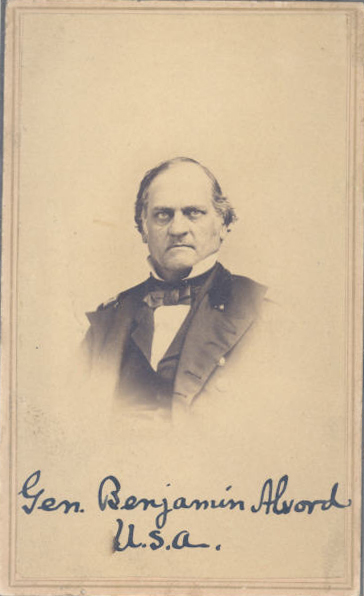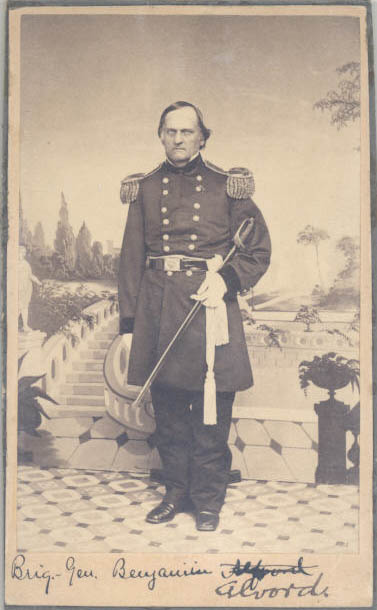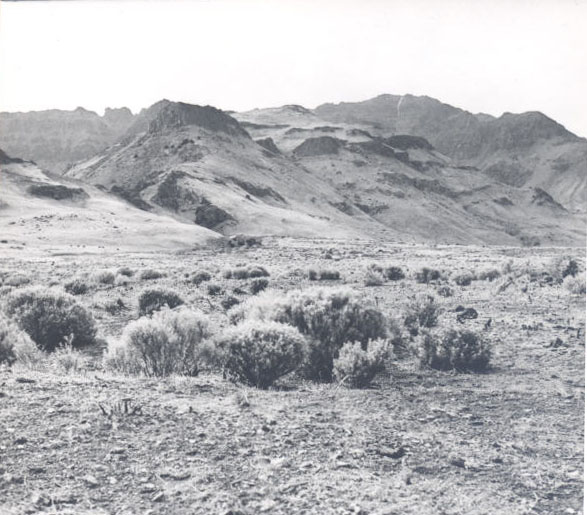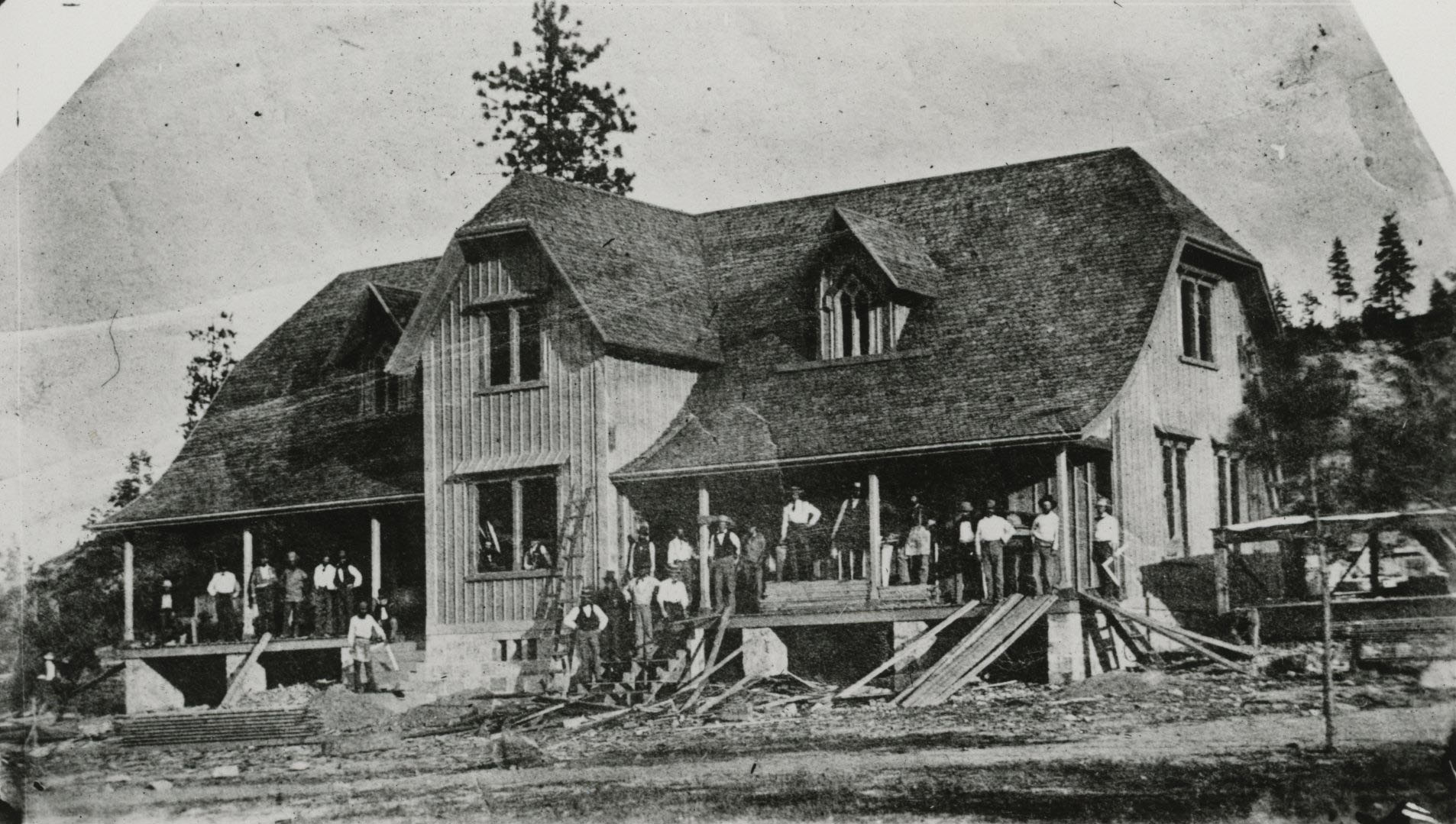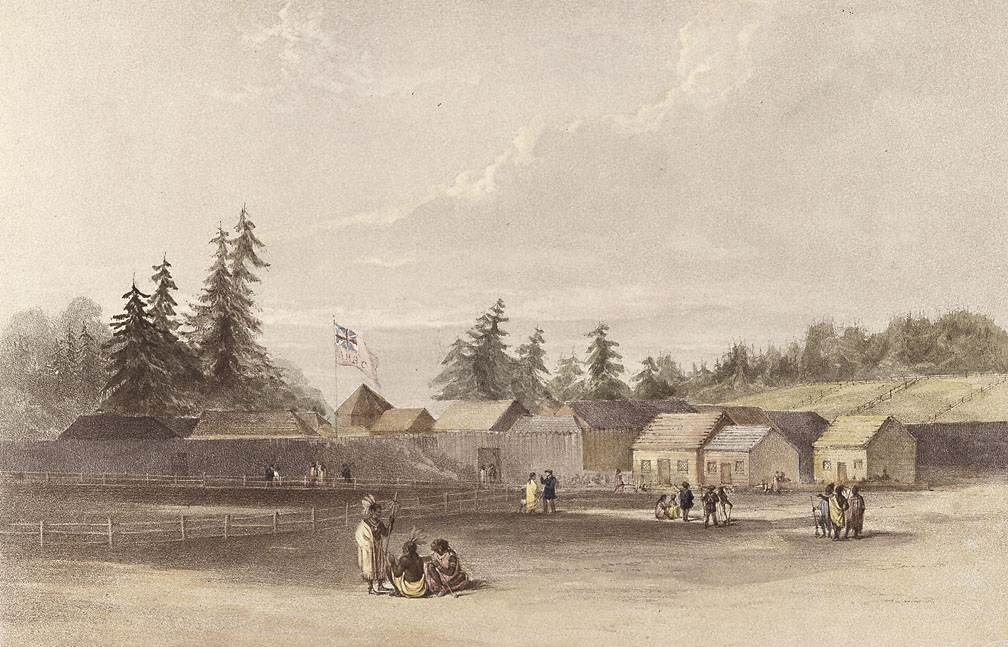An army officer, educator, writer, and naturalist, Benjamin Alvord was commander of the U.S. Army’s District of Oregon during the Civil War. His name is on several natural features in Harney County.
Born in Vermont in 1813, Alvord graduated from the Military Academy at West Point in 1833. He followed service in Florida’s Seminole War with a two-year appointment as assistant professor of mathematics and principal assistant professor of natural and experimental philosophy at West Point before heading west to duty in Indian Territory (today’s Oklahoma). He served with distinction in the Mexican American War in 1846, twice earning brevet honors.
On September 28, 1852, Alvord arrived at Fort Dalles, Oregon Territory, with a company of the Fourth U.S. Infantry, and assumed command. The next year, Secretary of War Jefferson Davis charged him with constructing “the military road from the mouth of Myrtle creek, on the Umpqua river, to Camp Stewart, in Rogue River Valley.” When Alvord fell short in locating a route that circumvented Umpqua Canyon, he contracted with the Applegate brothers and Jesse Roberts, who cut the road through the canyon and the Grave Creek hills. Portions of the road are still in use.
Alvord spent the next eleven years at Fort Vancouver as the chief paymaster for the army’s District of Oregon. In 1862, following a promotion to the rank of brigadier general of volunteers, he was named district commander. By the end of 1863, his command included Fort Vancouver, the Vancouver Arsenal, Fort Walla Walla, Fort Colville, Fort Steilacoom, and San Juan Island’s Camp Pickett in Washington Territory; Fort Dalles and Fort Hoskins in Oregon; Fort Lapwai and Fort Boise in Idaho Territory; and two coastal fortifications under construction, Fort Stevens and Fort Canby.
From his headquarters at Fort Vancouver, Alvord assigned a largely volunteer force to protect the interests of miners and settlers, especially those in the Snake River basin and the Walla Walla, Grande Ronde, Powder, and John Day Valleys. This protection came at great cost to the region’s Native peoples, a fact that was not lost on Alvord. Writing to Oregon Senator James Nesmith in 1862, he lamented: “After their long and unswerving friendship & fidelity to us & to our flag, it is melancholy to see so little care taken to carry out treaty stipulations, and that with a tribe [the Nez Perce] who have adhered to us through thick and thin.” Alvord established Fort Lapwai on the Nez Perce Reservation, hoping that it would be “pleasing to all factions of the tribe, as they are habituated to look to the military for protection.” In the high-desert country of southeastern Oregon, Alvord's command included overseeing part of the relentless "Snake War" against widely scattered bands of Northern Paiute. During that conflict, Captain George Currey named Alvord Lake and Alvord Desert, east of Steens Mountain, for his commanding officer.
Alvord had a lifelong interest in mathematics, science, and the literary arts. He published several scholarly works, including The Tangencies of Circles and of Spheres (the eighth volume in Smithsonian Contributions to Knowledge) and “On the Interpretation of Imaginary Roots in Questions of Maxima and Minima.” A founding member of the Literary Society of Washington, he published articles in magazines such as Harper’s, including one about an experience at Fort Dalles.
While stationed in Oregon, Alvord addressed the Oregon State Educational Association and Teacher’s Institute convention in Salem (1891) and delivered a commencement address at Pacific University in Forest Grove (1864). On an expedition into southeastern Oregon in 1864, troops under Alvord’s command explored a valley in present-day Harney County and named it for him. A small subpost of Fort Boise was named Camp Alvord, and the Alvord Hot Springs were also named for him.
The prospect of Lincoln’s reelection in 1864 brought to Alvord “threats of uprising” on Election Day from “secret clubs whose members are armed.” Alvord subsequently acted on a request from Oregon Governor Gibbs and armed volunteer companies from the Oregon militia, making sure to note that they were not to “influence, much less to control or restrain, any one in full and free exercise of his right to vote for whomever he pleases.” No conflict arose.
Although he received three brevet promotions during the war and had the support of Oregon’s pro-Union newspapers, by 1864 Alvord was relieved from command and called east in March 1865. He served his remaining fifteen years in the army’s Pay Department. Ulysses S. Grant, commanding lieutenant general of the army, approved his selection as the department’s chief in 1872. Alvord retired as a brigadier general in 1880. He died in 1884 and is buried in Vermont.
-
![Gen. Benjamin Alvord]()
Gen. Benjamin Alvord.
Gen. Benjamin Alvord Courtesy Oreg. Hist. Soc. Research Lib., OrHi 53880
-
![Gen. Benjamin Alvord]()
Gen. Benjamin Alvord.
Gen. Benjamin Alvord Courtesy Oreg. Hist. Soc. Research Library, OrHi53881
-
![Alvord Valley, Steens Mountains, 1932]()
Alvord Valley, Steens Mountains, 1932.
Alvord Valley, Steens Mountains, 1932 Courtesy Oreg. Hist. Soc. Research Lib., neg. no.004782
Related Entries
-
![Alvord Desert]()
Alvord Desert
The Alvord Desert, east of the Pueblo Mountains and Steens Mountain and…
-
![Fort Dalles]()
Fort Dalles
Established as a small U.S. Army post in 1850 on a bluff overlooking th…
-
![Fort Stevens]()
Fort Stevens
One of the three major forts designed to protect the mouth of the Colum…
-
![Fort Vancouver]()
Fort Vancouver
Fort Vancouver, a British fur trading post built in 1824 to optimize th…
-
![Steens Mountain]()
Steens Mountain
Rising to an elevation of 9,733 feet, Steens Mountain is the highest po…
Map This on the Oregon History WayFinder
The Oregon History Wayfinder is an interactive map that identifies significant places, people, and events in Oregon history.
Further Reading
Alvord, Benjamin. “On the Interpretation of Imaginary Roots in Questions of Maxima and Minima.” The Mathematical Monthly 2.7 (April 1860): 237-40.
Alvord, Benjamin. “The Doctor-killing Oregons.” Harper’s Monthly (February 1884), 364-6. http://www.unz.org/Pub/Harpers-1884feb-00364
The War of the Rebellion: A Compilation of the Official Records of the Union and Confederate Armies, Series 1, Vol. 50, Part 2. Washington: Government Printing Office, 1897.
Josephy, Alvin M., Jr. The Nez Perce Indians and the Opening of the Northwest. New York: Houghton Mifflin, 1997.

